Weeds are common in gardens. However, excessive weeds with long taproots can hinder the growth of useful plants and can be particularly difficult to uproot. We've researched this question to determine the best way to get rid of weeds with long taproots from your garden.
There are different methods to remove weeds with long taproots, such as:
- Uproot weed with tools like a knife, spade, or grubber
- Use a weed killer to eliminate the weed
- Dehydrate weed with cardboard or mulch
Weeds can hinder your otherwise healthy garden, so it is best to get rid of them as soon as possible. Keep reading to learn more about removing weeds with long taproots. We would also discuss the best tools for the job and how to eliminate weeds permanently.
How To Remove Weeds With Long Taproots
Weeds with long taproots can be problematic if you want to keep your lawn or garden neat. These plants are difficult to kill, especially if left to grow for long periods. But there are ways to get rid of weeds with long taproots.
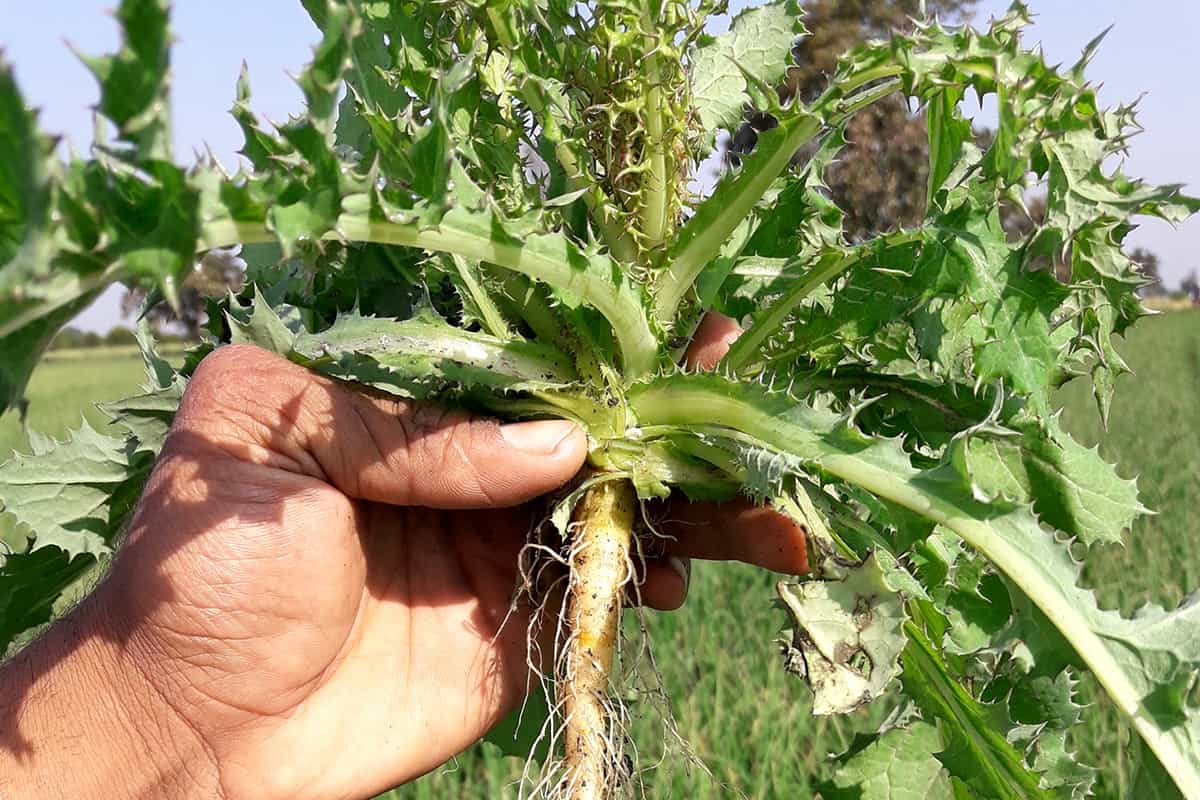
These methods are not only effective, but some are also environmentally friendly.
Uproot With a Knife, Grubber, or Spade
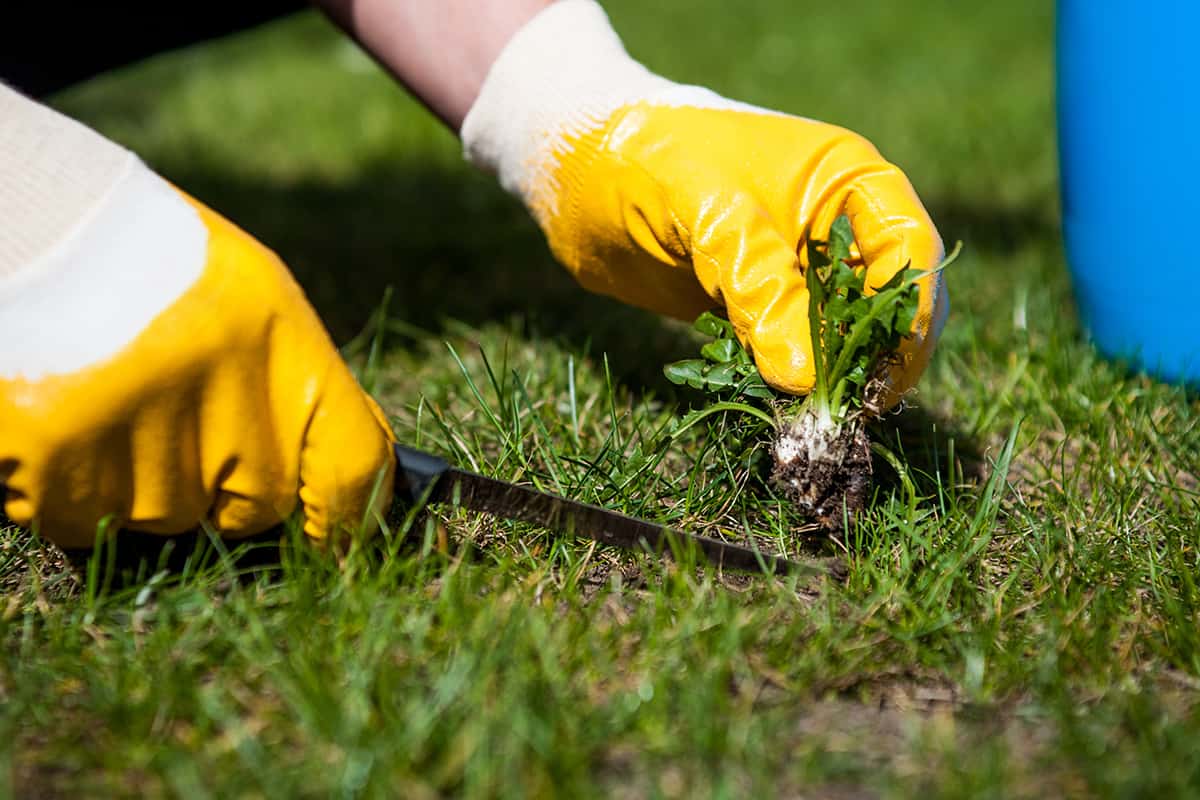
The best way to remove weeds with long taproots is by using a knife, grubber, or spade. First, cut through the soil in a circle around the weed using the tool's edge. Then, angle the blade so the cutting edge is pointed toward the center and continue cutting until you have made a circle several inches deep around the weed.
Insert your tool into this hole and use it to carefully pull up on the weed's root system from below. Use a pair of pliers to gently loosen any taproots stuck in place. Finally, gather uprooted weeds with a rake and dispose of all the materials as soon as possible.
Doing so will prevent them from re-establishing themselves in your garden beds. Be sure to also remove any other weeds in the surrounding area that could take over and spread again quickly.
Use a Weed-Killer
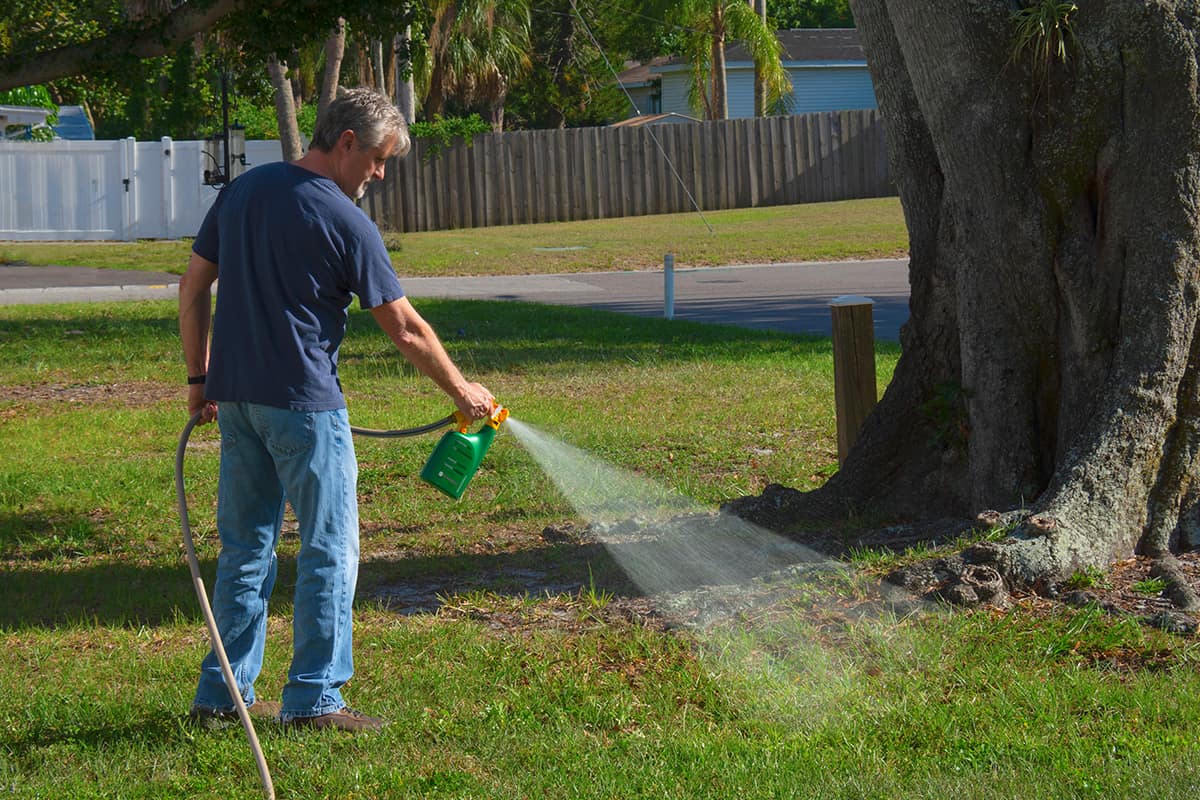
Many chemical herbicides are available specifically for targeting certain weed species, so if manual removal isn't feasible, these products may be a viable alternative.
Whichever method you choose, proper weed management is essential for a healthy and successful garden space.
Check out the Ortho GroundClear Weed and Grass Killer on Amazon.
Use Mulch or Cardboard
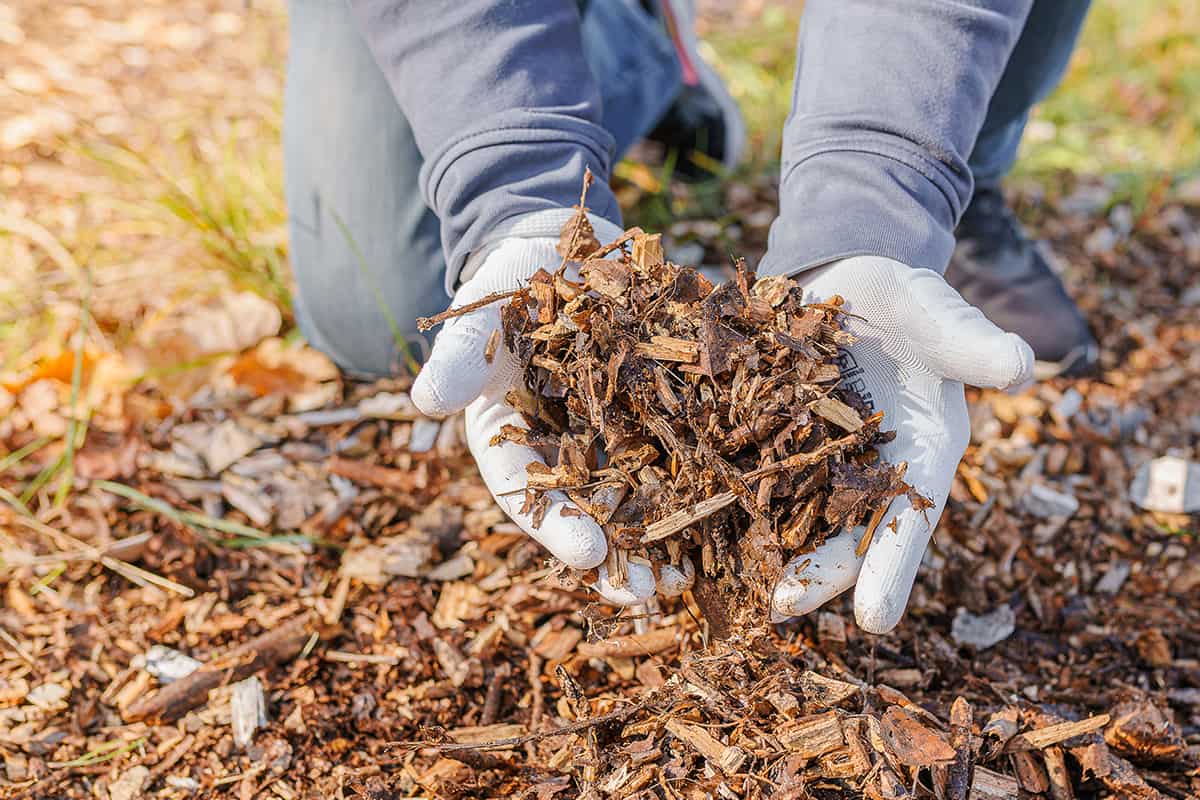
One way to kill weeds is by putting down cardboard on the soil. This adds carbon to the soil and dehydrates the weed roots. Another way to control weeds is to cover the soil with mulch.
This will keep the sunlight from reaching underground weed seeds. It will also help conserve water and keep the microbial community healthy. This mulch breaks down over time and releases essential nutrients into the soil.
A weed tarp is similar to cardboard and a great way to clear large areas of weeds with taproots. A tarp is easy to construct from a heavy-duty plastic sheeting roll and is a good choice for clearing large areas of weeds.
What Are Other Tools For Removing Taproots?

Long-taproot weeds are hard to remove from the soil, and using a weeding tool is the best way to go about it. Weeding tools come in many shapes and sizes for different species of weeds with taproots.
The best tools for weeding large areas with long taproots are designed to provide more leverage, which makes it easier to work through the soil. Here are some other tools you can consider using apart from a knife or grubber.
Kana Hoe
If you're weeding in a raised or flower bed, you might need a sturdier tool. The kana hoe is ideal for general weeding in a raised bed. It is light enough to use while standing and has a wide head for general weeding.
The kana hoe is an especially effective way to eradicate weeds with taproots, such as dandelions. Cutting into the soil and removing the weed at its base prevents future growth and minimizes damage to other plants in the area.
With minimal maintenance for sharpening and reshaping the blade edge, this tool is an ideal solution for long-term weed control in your garden or landscape.
Check out the BlueArrow Express kana hoe on Amazon,
CobraHead Weeder
Using the cobra head weeder farming tool is an effective way to remove weeds with taproots. The unique shape of the cobra head allows it to penetrate deep into the ground and cut through roots of all sizes.
It is also lightweight, making it easy for farmers to carry and operate in their fields. Additionally, its ergonomic design ensures that users can work longer without fatigue or strain on their hands.
Weed Fork
A weed fork is an effective tool for helping gardeners easily remove taproots. The long, straight handle of the weed fork allows users to reach deep into the plant and firmly grasp the root.
Its sharp edge help penetrates tough soil and efficiently dig out deep taproots. This makes it ideal for removing stubborn weeds like dandelions, thistles, and pigweed.
Does Mowing Over Weeds Spread Them
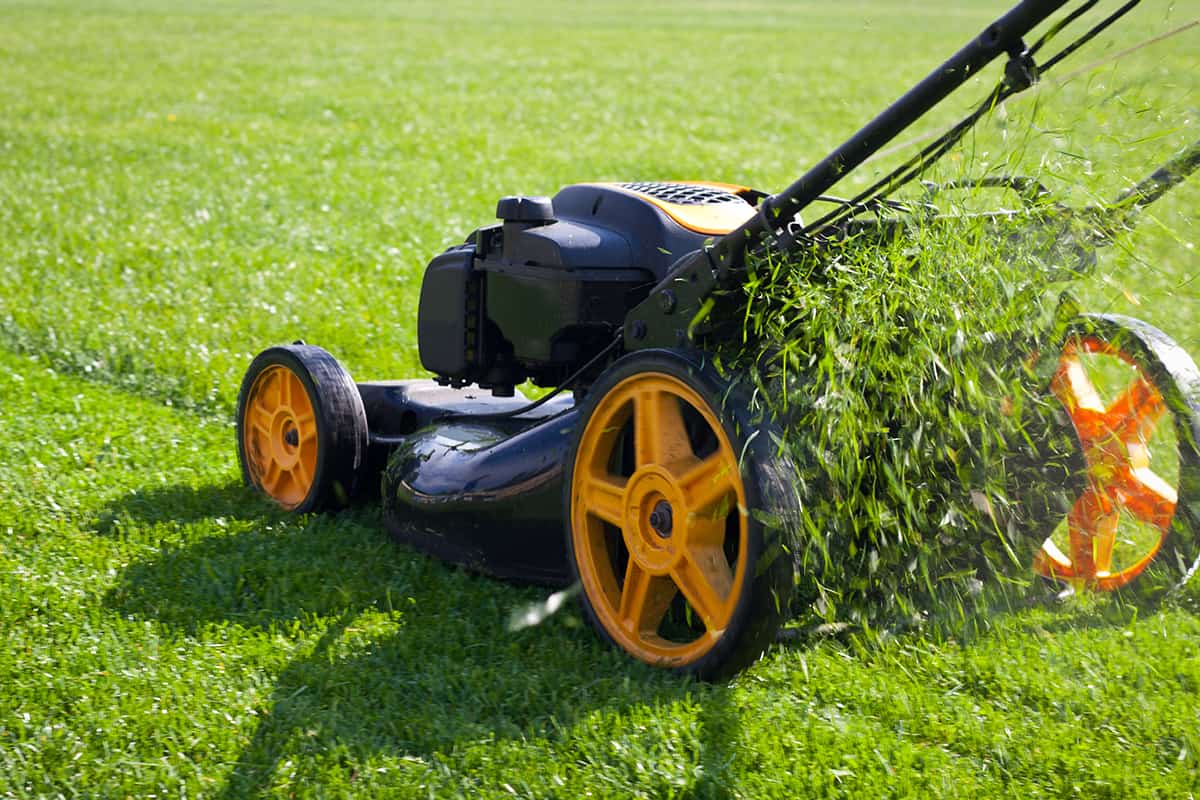
Using a lawn mower to mow over weeds might not be the best option. The blades of the mower can spread weed seeds into neighboring areas. The wind or water can carry these seeds. They can even get stuck on the undercarriage of the mower.
If you have a dense lawn, weeds might not be able to spread through runners and stolons. However, if you have a lawn that is bare and not thick, the weeds will continue to spread.
If you plan to mow over weeds, use a clippings bag to prevent seed spreading, although this can be time-consuming.
Is It Better To Pull Weeds or Spray Them?
Pulling weeds and spraying them comes with advantages and drawbacks. Pulling weeds is time-consuming. Plus, it can cause more weeds to grow on your lawn. If you want to save time, spraying the weeds is faster, cheaper, and easier. It is also the best method of getting rid of extensive weed infestation.
However, if you decide to pull weeds by hand, you should use a weeding tool to help you get into the soil. Remember that some weeds can reroot if you don't get out the taproot.
It is best to pull weeds when the soil is wet. This allows them to slide out of the soil easier. If the weeds are tall, you may have to use a brush cutter or weed eater to get them out. You may also need to shave a little off the tops of tall weeds.
If you choose to spray weeds with herbicide, read the label and follow the directions. Wear protective clothing, like gloves and face masks, to protect yourself from inhaling the chemicals.
These products can help kill weeds, but they can also harm the environment, the health of people around them, and the biodiversity of the soil. It is also possible to burn plants by using herbicides.
If you do not want to use industrial herbicides, you can create an organic one using a mixture of horticultural vinegar and orange oil. You can also make homemade herbicidal soap by mixing vinegar, salt, and dish soap.
What Is The Best Time For The Removal of Weeds?
The best time to tackle weeds is in the spring before they flower. This will prevent their seeds from spreading in their growing season. You can also remove them in the fall, as the soil might be softer during this period.
Conclusion
Whether you have a lawn or garden, it is a good idea to know how to clear large weeds with long taproots. Identifying weeds with long taproots is an important step in the weeding process. You will also need tools or herbicides for removing weeds with long taproots.
If you enjoyed reading this post, check out other related articles below:


